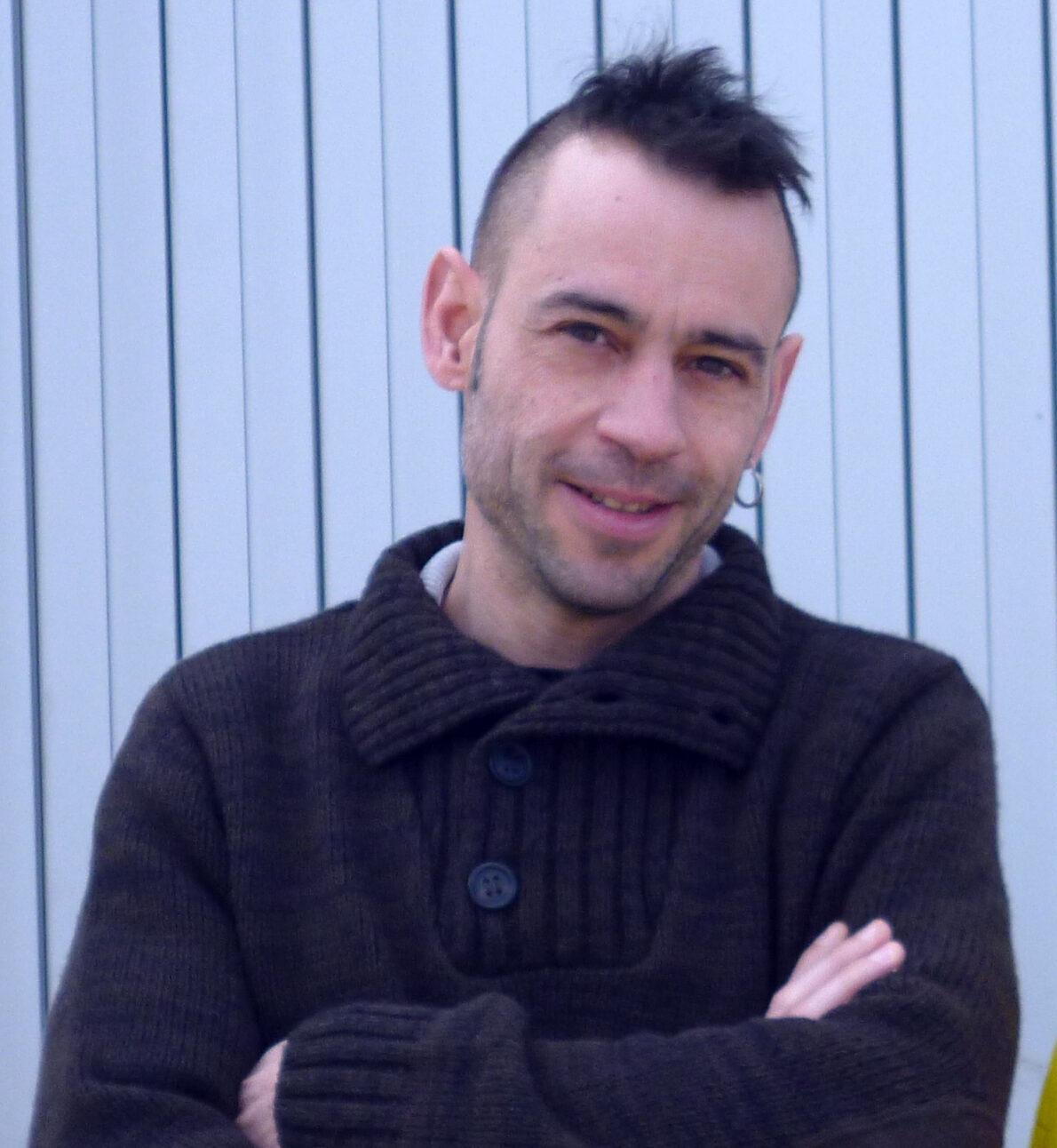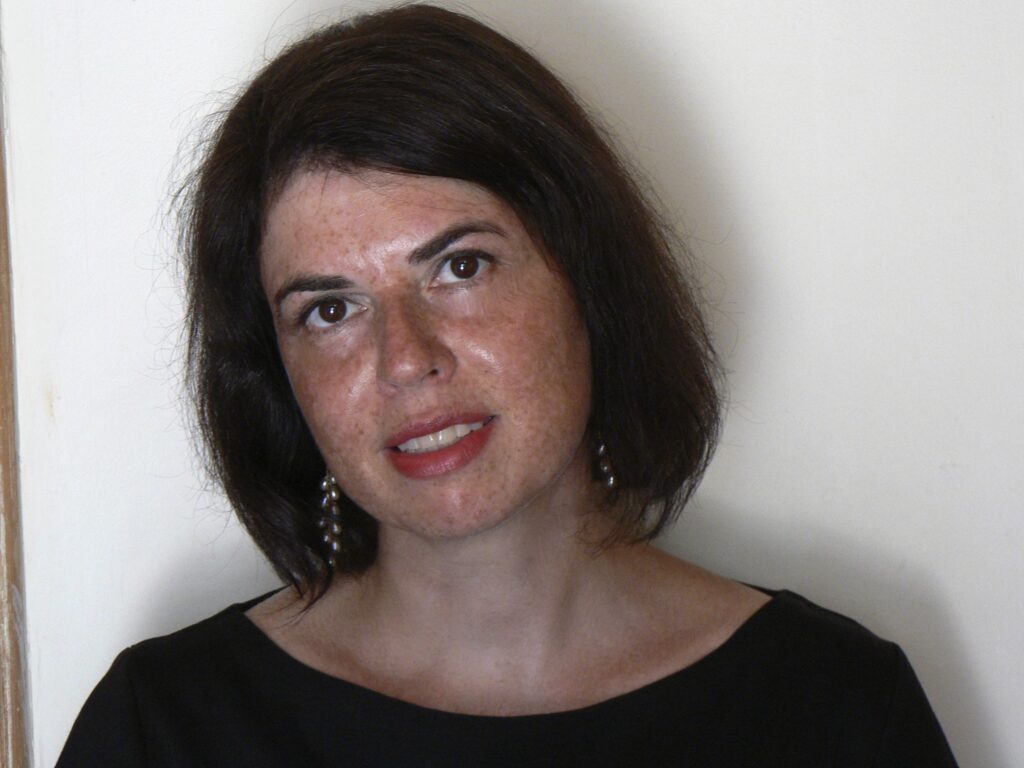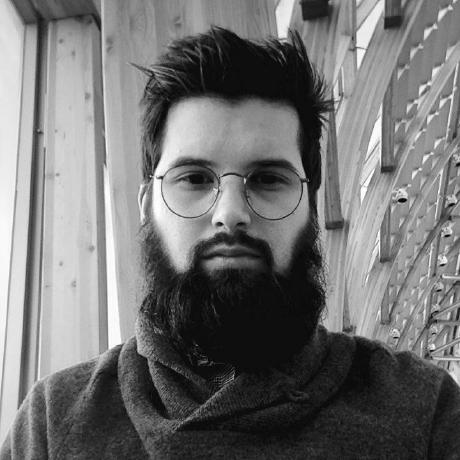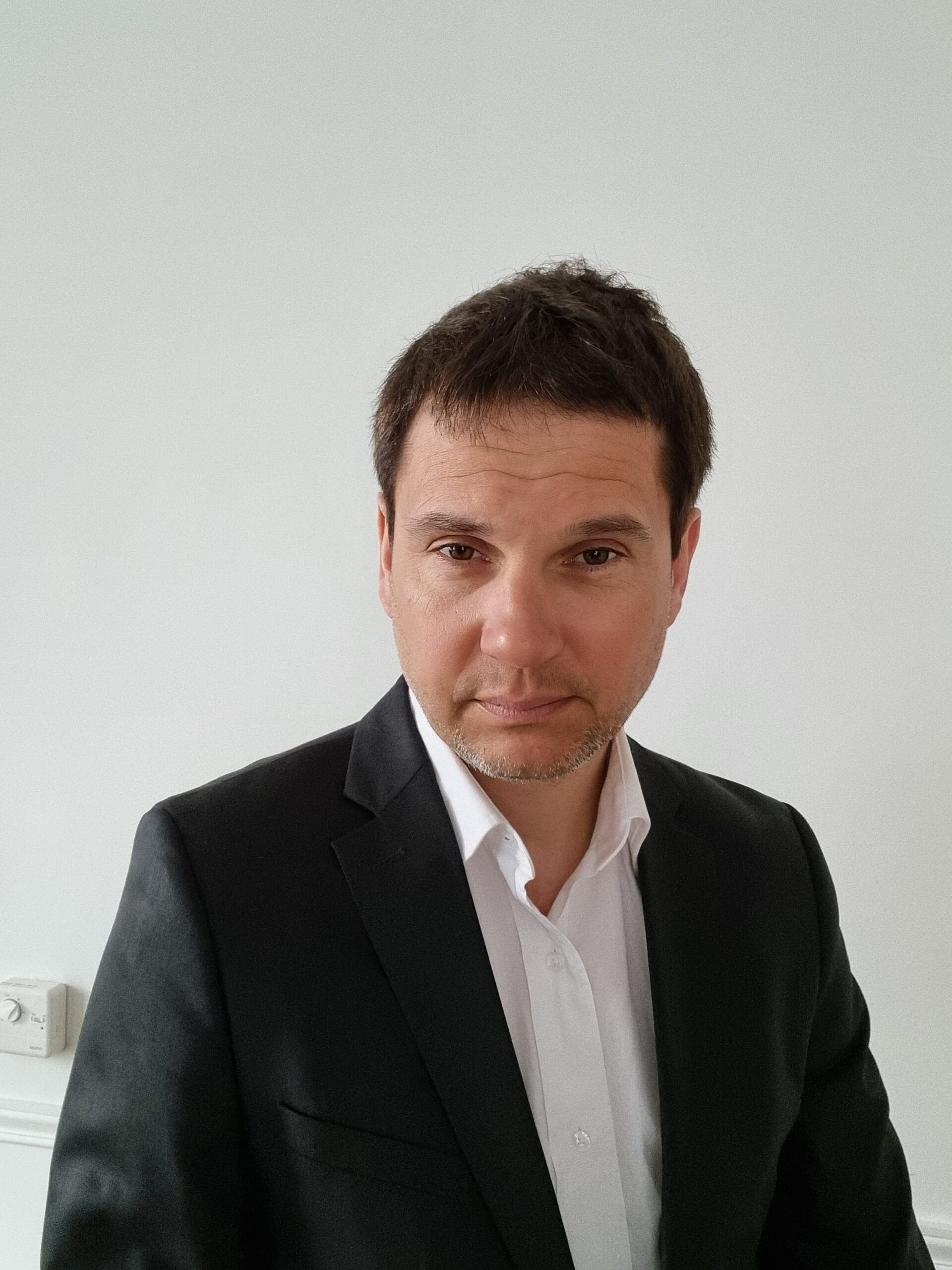This interview took place on 1 June 2023 in Paris. Full Professor Sheenagh Pietrobruno, recipient of a grant from the Rector’s Stimulus Fund at Saint Paul University, federated with the University of Ottawa, which supports research conducted at Dicen-IDF, discusses her research subjects, their developments and the practice of digital heritage, of which she is one of the pioneers. Three documents were used to prepare this discussion: an initial piece of research on stereoscopes, which came into being at the end of the nineteenth century and enabled users to see iconic monuments and places around the world through miniatures. Sheenagh Pietrobruno examines their reception and the uses to which they were put (The Stereoscope and the Miniature). The second document, the result of research into a dervish community in Turkey that allows women to perform in public dervish ceremonies alongside men, highlights the way that YouTube enables these practices, through popular participation, to compete with the narrative promoted by UNESCO and the Turkish state, which highlights an exclusively male practice. This work is a continuation of an interest in dance culture and its online dissemination. The last, and most recent, document shows how the Swedish History Museum is trying to counter the stereotyped image of the Vikings, which is prevalent online in caricatured presentations that sometimes carry a masculinist ideology.
This interview took place on 1 June 2023 in Paris. Full Professor Sheenagh Pietrobruno, recipient of a grant from the Rector’s Stimulus Fund at Saint Paul University, federated with the University of Ottawa, which supports research conducted at Dicen-IDF, discusses her research subjects, their developments and the practice of digital heritage, of which she is one of the pioneers. Three documents were used to prepare this discussion: an initial piece of research on stereoscopes, which came into being at the end of the nineteenth century and enabled users to see iconic monuments and places around the world through miniatures. Sheenagh Pietrobruno examines their reception and the uses to which they were put (The Stereoscope and the Miniature). The second document, the result of research into a dervish community in Turkey that allows women to perform in public dervish ceremonies alongside men, highlights the way that YouTube enables these practices, through popular participation, to compete with the narrative promoted by UNESCO and the Turkish state, which highlights an exclusively male practice. This work is a continuation of an interest in dance culture and its online dissemination. The last, and most recent, document shows how the Swedish History Museum is trying to counter the stereotyped image of the Vikings, which is prevalent online in caricatured presentations that sometimes carry a masculinist ideology.
Elie Petit: Sheenagh Pietrobruno, thank you for this interview with Culture Media Lab while you’re in Paris as a guest of Dicen-IDF. For those unfamiliar with your work and career, could you give us a brief introduction about yourself?
Sheenagh Pietrobruno: I’m originally from Vancouver. My first degree was actually in Literature, and then I did a master’s in Comparative Literature at McGill. Since then, my research has changed a lot. In my PhD in Communication Studies at McGill, I worked on Salsa dance via a sociological study of the movement in the city of Montreal. I proceeded by looking at the issues of commodification as well as the dance itself and at how it links to different notions of ethnicity. After my PhD, I did a postdoc at Goldsmith at the University of London. And then I worked more on the circulation of dance on the Internet. I then moved to Istanbul and worked there for five years. That was when I discovered my next topic: the female dancing dervish. The dervish dance, a part of the Mevlevi Sema ceremony, entered the Intangible Cultural Heritage of UNESCO in 2008 but not the version where women can perform alongside men.
The medium I mainly study is YouTube. My work has explored dance culture and YouTube. Recently, I was associated with a group of scholars in Sweden through a project financed by the Bank of Sweden Tercentenary Foundation (Stiftelsen Riksbankens Jubileumsfond) in cooperation with the Swedish History Museum. This project enabled me to work with the museum’s Viking collections. My latest research focuses on the circulation of Viking objects on YouTube. And now I find myself working with all these different kinds of case studies and different ways of approaching the study of culture and media through YouTube.
EP: What initially sparked your interest in exploring the intersection of heritage and digital issues? Why do you consider this intersection to be significant and worth exploring?
SP: It actually happened in Istanbul because I met the world music artist Mercan Dede. He told me about female whirling dervishes, but I was unable to find any shows that I could attend featuring women. I asked a few of my friends there about women dervishes, but they had only a vague idea about them. I then went onto YouTube and discovered many videos about them and started to do ethnographic research on the Mevelvi community in Istanbul, EMAV. They are the ones who in 1993, through their dede, which is the term for their spiritual leader, integrated female whirling dervishes into public performances. YouTube became for me an incredible source of information. It showed me something that was hard for me to see otherwise. I later understood that the dervish videos on YouTube were split into different groups. The intangible heritage safeguarded by UNESCO through the authority of the Turkish Ministry of Culture and Tourism did not include EMAV and therefore excluded the female dancers. That drew me into this whole notion of intangible heritage.
I could actually date my interest to a time before that. I finished my work on salsa dance in 2006 when YouTube was first developing. In order to discover all the styles of Salsa dance, I had to travel a lot, to New York City or Cuba, for example. But on YouTube, I could see and browse through all the different styles. I realized at that time that YouTube was the most incredible resource online, concerning dance.
EP: From reviewing excerpts of your various research, it appears that a distinct theme emerges. Would you agree that your work primarily focuses on the transformations of cultural heritage as it is disseminated through successive technologies, spanning from the late nineteenth century to the present day?
SP: I think that’s right. There was actually a progression in the sense that I’m always looking at the interrelation between intangible heritage (and now museum objects), from salsa dance to other dances, systematically through YouTube and other video-hosting sites. At the beginning, my work was very optimistic. It reflected the time, and I still feel that YouTube can offer a lot in terms of countering hegemonic narratives. The trend now is to acknowledge that social media can create only horrible dichotomies in society through algorithms. My position in looking at YouTube in a positive way is very much about how it can help to counter the dominant way of looking at social media. While recognizing its flaws, I still hold onto something positive in YouTube and the way it can be used to counter oppressive narratives. I am very much in the minority in my field.
EP: From stereoscopes to dervish women on YouTube to Viking artifacts in video content on the same platform, all your case studies explore the concept, object or function of the “miniature”. Can you tell us about these miniatures, which seem to be a salient feature of your identity as a researcher?
SP: I’m indeed very interested in the miniature as an undismissible motif in video dissemination and in the sharing of cultural heritage content. It’s quite an untheorized area. Now that we’re accessing the entire world on tiny phones, miniatures are the entry door of almost all content.
In a future project, I want to trace the rise of miniature objects through the history of technology. I want to argue that the way the miniature is viewed has changed over time. The stereoscope is interesting in this respect. At the end of the nineteenth century, when some viewers discovered world images through the miniature, they used to think it was horrific. It had the reputation of mimicking “God’s eye”, a visual blasphemy. Nowadays, we have stopped judging the miniature. I wonder about this consciousness we all have today about this scale and its possibility, which is not spoken about. I plan to study the miniature of the stereoscope, the miniature of the photograph, the miniature of television, in terms of their relation to cell phones. I can use the example of thumbnails to describe, from another perspective, this reality of the shift of miniatures to the digital realm. These online miniatures, which are fascinating, are nonetheless ignored and regarded as trivial media, even though they are powerful.
EP: When discussing the necessity of travelling to develop an interest in a broad subject and the role of image reproduction and circulation in facilitating access to knowledge, you highlight a trend towards a shrinking world. In what way did miniatures contribute to this notion of making the world a smaller place?
SP: I’m currently pursuing research on scrolling on YouTube. One of the arguments I have is that if you can view a search engine result page, with its thumbnails capturing your attention, that is because all the knowledge created through global YouTube users suddenly gives you everything at your fingertips. I think it changes the way information is ascertained, moreover, within the new generation. There was a lot of work done on how the Internet became a global structure, broadening our knowledge and capabilities. But this kind of research is now being put down or ignored, replaced by the ideas that the Internet is a negative space and that YouTube and other social media sites are dividing us by national identities and a host of identity categories. The idea that social media can bring the globe together is now out of favour. But I still think that from a technological and visual perspective, if you can just scroll down so quickly on a social media site, this ability gives you a kind of a global sphere in just a matter of seconds.
EP: The two aspects are perfectly linked: the shrinking of the world and the shrinking of time. We spend more and more time watching screens, getting entertained, and at the same time, miniatures are expanding our knowledge and simplifying it in a complex, intuitively paradoxical way.
SP: This was something I argued in my stereoscope study, as well as in my work on the Vikings. Online and in the more distant past, miniatures chosen either by individual users or by promoters, as with digital YouTube miniatures (i.e., thumbnails), have become a tool to attract the viewer. Miniatures in the past and present create standardization. They’re often today stereotypical and sensational. The present reflects the past. The stereoscope worked with sensational stereotypes, creating city standards (Paris is the Eiffel Tower and Istanbul is Ayasofya). This effect leads us to two theoretical perspectives of the miniature: it either opens the world up to immensity, like in Gaston Bachelard’s and Susan Stewart’s theories, or it reduces the world to an impoverished version of itself. For example, Jean Baudrillard speaks about how negative digital media is and about its process of miniaturization. Both visions coexist.
The thumbnail visualization of a search engine result page opens up a massive amount of information, but at the same time, because of its scale, YouTube will probably choose video thumbnails that work better visually. So something simpler like the Viking helmet or something like that. Thumbnails also create a simplicity of vision.
EP: Is it merely coincidental that stereoscopes and stereotypical miniatures share the same prefix? The Greek root “stereo” signifies solidity, which, in both cases, implies a stable and solidified perspective in terms of viewing and organizing knowledge.
SP: It’s an interesting take. Indeed, I can see that there is a link between standardization and the process of reaching a miniature scale.
EP: From one research project to the next one, you went from looking at how women are invisibilized in state efforts supported by the UNESCO-designated male dervish dance as intangible heritage through the Turkish Ministry of Culture and Tourism and how user content defies this sanction (people vs. institutions) to looking at how museums counter the vox populi, or maybe vox masculini, describing Vikings as a fully virile culture (institutions vs. people).
SP: From salsa dance and dervish women dancers to Vikings! One would say there’s a big leap here! It interests me how different museums and institutions could present different historical narratives. What’s unifying here and so interesting is that once you go onto YouTube, it suddenly opens one up to this proliferation of narratives produced by an array of users, from individuals to historians and sometimes activists. I found a few right-wing videos related to Vikings, which mainly used the symbol of the helmet as a thumbnail.
EP: Do you believe there is truly a leap? Instead, could we observe a continuous movement in how images are perceived and utilized today? The first study appears to focus on the promotion of cultural heritage through images. The second one explores how civil society’s online postings compete with a dominant nationalist and international cultural narrative. In the third study, the movement is reversed, as it describes how institutions can counter civil societal movements and stereotypes through visual content. So there is a progression from institutions promoting through images to institutions competing through images and finally to institutions attempting to counter stereotypes through visual content. Do you see this progression in your research? And on a deeper level, do you think your research represents a resistance to the way images have been used in the past fifteen years?
SP: I think your reading is clear and fascinating. I really like the way you’ve created that trajectory. From there, I can draw two possibilities: either I was very optimistic at the beginning and have become less optimistic ; or my research is very much linked to case studies. Even though I’m a communications scholar, I do a lot of intense work on case studies in themselves. And so case studies really direct how I look at YouTube. I do not try to systematize. My approach is rather an attempt to create a meaningful dialogue between a given case study and the media. Another pattern in my work that deals more with your last question is my analysis of how a dominant voice propagating both institutional and civil societal stereotypes is being countered by a minority narrative, whether it is rooted in civil society or powered by institutions like a museum promoting a less violent vision of a culture.
EP: Could you please explain your methodology and its classification? Do you consider your approach to be online ethnography? Digital anthropology? Where does it originate, and how does it position itself within the realm of cultural studies?
SP: That’s always been a problem with my research because it doesn’t fit nicely into any box. One of the terms that fits is digital heritage, which is looser. Cultural studies as a term seems to have fallen out of favour. The academy, it seems, has shifted the analysis of culture within heritage studies. My in-depth work on heritage has to do with anthropological work that is combined with the importance of looking at how the digital sphere influences the context. But if you want something more specific, I would say that it’s an interdisciplinary practice. In other words : how heritage is forged through historical narratives that are transformed into public history through their dissemination on social media search engine result pages.
EP: Following the previous question about methodology, which tools do you use to collect thumbnails and to classify them?
SP: With my research assistant, Oumaima Sedrati, we use a tool called Quirkos. It’s not perfect and we are still establishing a better methodology. Every day, we collect the results of search engine research via certain keywords. We record the ranking of each video in a given search engine result page and do a semiotic description of the thumbnails in relation to their corresponding video narratives. We do that every day for each search engine result page. It’s very laborious and it’s very time-consuming. Each piece of information – video title, thumbnail description, video rank, and so on – is then stored on an Excel sheet. My method is very narrative-based and small-scale, handmade. A future grant will help me to collaborate with a digital humanities professor at Carleton University in Ottawa who will correlate all this information.
Mots-clés
Last news





